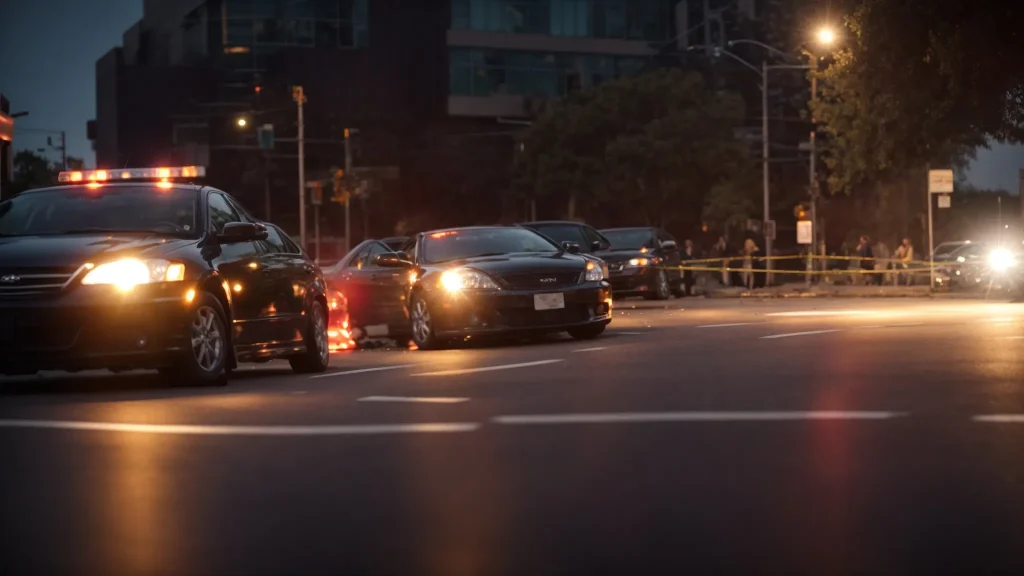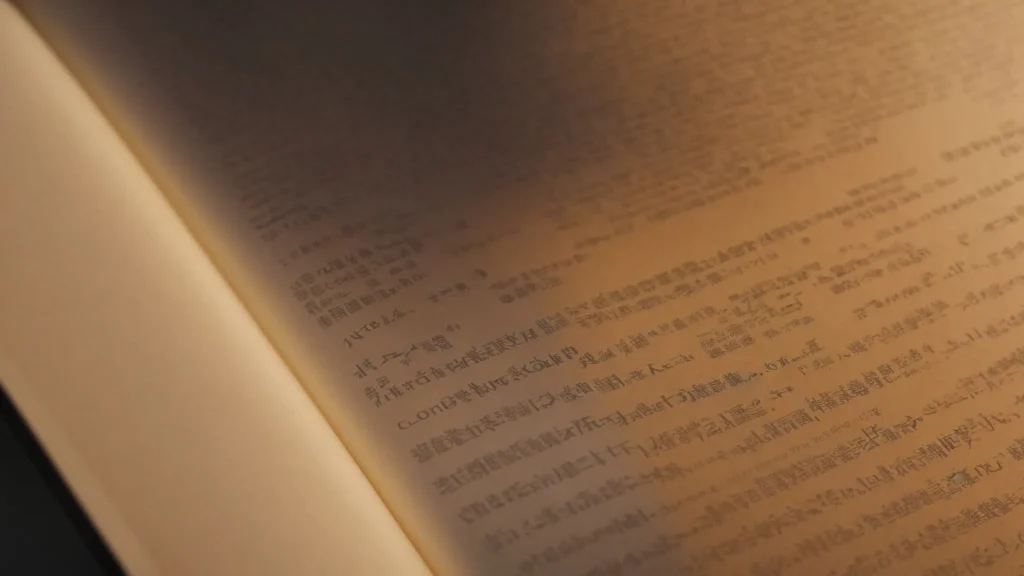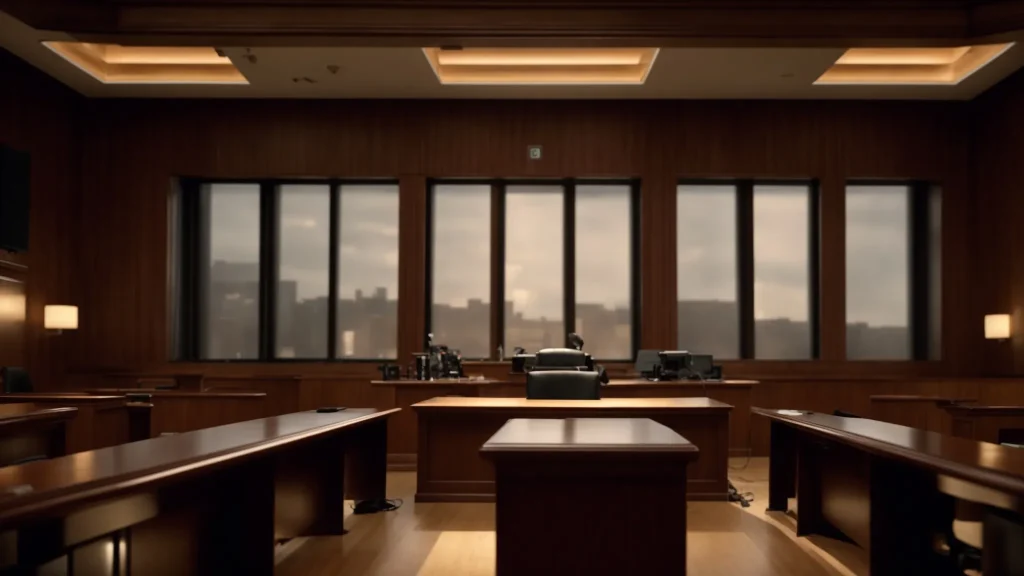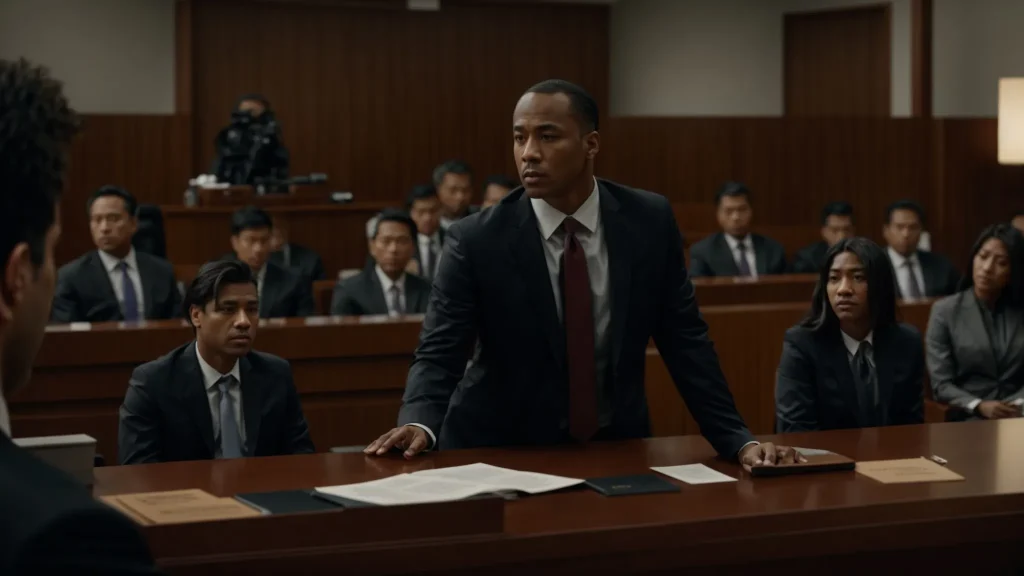Table of Contents
Comparative Negligence Explained: Auto Accident Edition
Have you recently been involved in an auto accident and are unsure how fault affects your compensation? In California, comparative negligence plays a crucial role in determining damages in these cases. This article will explain the concept of comparative negligence, how it influences compensation, and the different variations that exist. Readers will learn how to navigate their cases effectively, addressing concerns about potential fault in their accidents. Understanding this principle can significantly impact the outcome of your claim and help ensure you receive the compensation you deserve.
Defining Comparative Negligence in Auto Accidents

Understanding comparative negligence is critical in auto accidents, including car accident claims, motorcycle accidents, and rideshare accidents. This legal principle determines how fault impacts liability and damages awarded to injured parties. By clarifying the role of fault in these incidents, individuals can better navigate their claims and secure fair compensation for their injuries. If you’re seeking assistance, contacting an automobile crash attorney near me can provide the necessary support.
The Role of Fault in Auto Accidents
The determination of fault plays a crucial role in auto accidents, directly influencing the outcome of personal injury claims. If an individual is found to have violated traffic laws, such as exceeding the speed limit or failing to pay attention to road conditions, this can significantly affect their liability. Understanding how fault is assessed in each case allows injured parties to better advocate for their rights.
In California, the comparative negligence system means that liability for an accident can be shared among the involved parties. For instance, if one driver is 70% at fault for an accident and another driver is 30% at fault, each party’s compensation will be adjusted accordingly. This highlights the importance of effective communication and evidence gathering following an incident, as these elements can clarify the roles of each party and establish a fair account of damages to property and injuries.
Moreover, specific scenarios often illustrate the impact of comparative negligence on claims. For example, if a pedestrian is injured because a driver was distracted, but the pedestrian was also jaywalking, both parties may share some responsibility. Recognizing these nuances is essential for navigating personal injury claims and ensuring that victims receive appropriate compensation based on the accurate assessment of each party’s actions.
Impacts on Liability and Damages
The principle of comparative negligence directly impacts liability in auto accidents, including car accident cases. In instances where multiple parties share fault, the total damages awarded to an injured party will be reduced by their percentage of fault. This means that if a driver is found to be 20% at fault for an accident, they would receive only 80% of the total damages, highlighting the importance of accurately assessing negligence in each case.
Understanding how comparative fault works is essential for individuals involved in auto accidents. For example, consider a situation where a driver rear-ends another vehicle while also exceeding the speed limit. If the injured party was not wearing a seatbelt, their compensation could be reduced due to their share of negligence. By grasping the nuances of comparative negligence, victims can better prepare for negotiations with insurance companies and litigation if necessary.
In California, the implications of comparative negligence can extend beyond auto accidents to include claims involving premises liability. Injured parties need to recognize that their actions, such as being careless around a property where an accident occurs, can affect their case’s outcome. Seeking legal guidance in these situations can provide valuable insight into how comparative negligence will impact both liability and damages, ensuring that victims receive just compensation for their injuries and losses.
How Comparative Negligence Works in Auto Accidents

Determining degrees of negligence is crucial in auto accidents, as it influences both liability and compensation. This principle assesses how the fault of each party impacts their claims. Evaluating evidence, such as traffic light signals and eyewitness accounts, helps clarify fault. Calculating compensation involves adjusting awarded amounts based on each party’s share of negligence, emphasizing the need for experienced legal guidance from a personal injurylawyer.
Determining Degrees of Negligence
Determining degrees of negligence in auto accidents is essential for establishing liability and compensation. The standard of care refers to the expectation that individuals will act reasonably to avoid causing harm to others. For instance, in pedestrianaccidents, if a driver fails to yield to a crossing pedestrian, their actions may be evaluated against this standard to determine their level of fault.
Evidence plays a crucial role in assessing negligence. Testimony from eyewitnesses can provide impactful insights into the behaviors of each party involved in the incident. For example, if a witness confirms that a driver was speeding before a collision, this could significantly influence the allocation of fault, especially in cases concerning wrongful death claims arising from auto accidents.
Understanding how to calculate and assign fault can also affect the overall outcome of a Florida personal injury case. When determining negligence, both physical evidence and behavioral patterns must be considered to ensure that all factors influencing the accident are accounted for accurately. This thorough evaluation supports victims in receiving fair compensation and helps them navigate the complexities of legal proceedings effectively.
Calculating Compensation Based on Fault
Calculating compensation in auto accident cases hinges on the determination of fault. When assessing liability, an expert witness can provide invaluable insight, analyzing evidence and contributing to the understanding of how each party’s actions influenced the incident. For instance, if the defendant was operating their vehicle recklessly, this could significantly alter the compensation awarded to injured parties based on their degree of negligence.
Eyewitness testimony plays a crucial role in shaping the determination of fault and subsequently calculating damages. Reliable witnesses can share observations that clarify the sequence of events leading to the collision. Their statements help establish who was at fault, impacting the overall compensation a plaintiff might receive due to the actions of each party involved, including pedestrians, other drivers, and cyclists.
Once liability is assessed, the nuanced calculation of compensation becomes essential. If a plaintiff is determined to be partially at fault, an adjustment in the total compensation amount occurs. For instance, if damages amount to $100,000 and the plaintiff is found 20% responsible, they would only receive $80,000. Proper legal representation ensures that parties understand these calculations and advocate for fair compensation aligned with their circumstances.
Variations of Comparative Negligence

Understanding the variations of comparative negligence is essential in navigating auto accidents. Pure comparative negligence allows recovery regardless of the injured party’s fault, while modified comparative negligence limits it based on a certain threshold. Differences among states affect how contributory negligence is assessed, which can impact claims involving distracted driving. This section will explore these variations and their significance regarding the duty of care and legal outcomes.
Overview of Pure Comparative Negligence
Pure comparative negligence is a legal principle applied in personal injury cases where fault is assigned to all parties involved. Under this system, a jury can determine the percentage of fault for each party, including the injured victim. This means that even if the plaintiff is found to be partially responsible for the accident, they can recover damages from the other party according to their percentage of liability.
For example, if a jury finds that a driver was 80% at fault for an auto accident while the injured party holds 20% of the blame, the injured victim can still pursue a claim. In this case, if the total damages amount to $100,000, the injured party would be eligible to recover $80,000, illustrating how pure comparative negligence operates within tortlaw. Such scenarios highlight the importance of thorough evidence collection and presentation during trials to establish fault accurately.
This approach contrasts with modified comparative negligence systems, where a threshold exists that bars recovery if the injured party’s fault exceeds a certain percentage, typically 50% or 51%. Understanding pure comparative negligence is vital for individuals involved in accidents, as it directly influences their ability to receive fair compensation for damages incurred due to another’s failure to act safely. By grasping these concepts, victims can make informed decisions regarding their claims and legal representation in the aftermath of an auto accident.
Overview of Modified Comparative Negligence
Modified comparative negligence is a legal concept that affects how compensation is awarded in personal injury cases, particularly in the context of traffic-related incidents. Under this system, recovery is contingent upon the injured party’s degree of fault being below a specified threshold, commonly set at 50% or 51%. This means that if an individual is found to be equally or more at fault than the other party, they may be barred from receiving any compensation for damages incurred in an automobile crash.
This principle impacts various types of accidents, including bus accidents and collisional events involving multiple vehicles. For instance, if a jury determines that a plaintiff is 40% at fault for a bus accident, they can still recover damages from the other party for the remaining 60% of liability. However, if their fault is assessed at 55%, the plaintiff would not be able to pursue compensation, emphasizing the severe repercussions of being deemed excessively at fault.
Understanding modified comparative negligence is vital for individuals pursuing personal injury claims, as it fundamentally shapes the landscape of liability and compensation. Those involved in accidents should consider seeking guidance from an automobile crash attorney near them to navigate the complexities of their case. This legal assistance ensures that victims can effectively present their case, establish fault accurately, and recover damages based on their share of liability while remaining within the bounds of the legal framework established by modified comparative negligence.
Differences Across States
In the United States, laws regarding comparative negligence can vary significantly from one state to another, impacting how plaintiffs navigate their auto accident claims. Some states implement pure comparative negligence, allowing injured individuals to recover damages regardless of their own level of fault. This approach can be beneficial in cases such as rv accidents, where both parties might share responsibility for property damage.
Conversely, modified comparative negligence, which is adopted by many states, sets a threshold at which a plaintiff can be barred from recovering compensation. For instance, if a plaintiff is found to be more than 50% at fault in a hit and run scenario, they may not be entitled to any damages. Understanding these distinctions is vital for individuals involved in auto accidents, as they influence the feasibility of filing a successful lawsuit for compensation.
Moreover, variations in comparative negligence laws can also affect how insurers handle claims. In some jurisdictions, the allocation of fault plays a pivotal role in determining settlement amounts, particularly in claims involving multiple vehicles. Therefore, injured parties must stay informed about their state’s specific regulations, ensuring they approach their cases with the right legal strategies to maximize potential compensation.
Legal Implications of Comparative Negligence

Navigating insurance claims in auto accidents involves understanding how comparative negligence applies, particularly when determining fault at stop signs or traffic signals. Essential court considerations, including the burden of proof and testimony before a judge, play a critical role in shaping potential outcomes in legal proceedings. These components are vital for victims as they pursue fair compensation through trials or settlements.
Navigating Insurance Claims
Navigating insurance claims after an auto accident can prove to be a complex process, especially when comparative negligence comes into play. Understanding how the doctrine of comparative negligence affects liability is essential for claimants as they interact with insurance companies. Insurers often evaluate fault based on evidence, such as witness statements and traffic reports, which can significantly sway the outcome of the claim.
Claimants may find themselves needing to gather pertinent information to support their case. Testimonies from bystanders or documented evidence like police reports play a vital role in establishing fault. As they present their claims, individuals should be prepared to explain how the comparative negligence principles apply to their situation, as insurers will scrutinize the degree of fault attributed to each party involved in the accident.
Additionally, knowing how liability works in different scenarios, such as a slip and fall case or a product liability incident, can inform claim strategies. Understanding the specific circumstances that fall under comparative negligence helps individuals better communicate the nature of their cases in court. This insight is key for attaining a fair settlement, as it empowers injured parties to advocate for their rights effectively while pursuing the compensation they deserve.
Essential Court Considerations
When evaluating auto accident cases under the legal doctrine of comparative negligence, courts focus on the percentage of fault attributed to each party involved. This evaluation plays a crucial role in determining liability and the total damages that can be sought in court. For instance, if a plaintiff is found to be 30% responsible for the accident, their potential recovery will be adjusted accordingly, emphasizing the need for clear evidence during the legal process.
In the context of negotiations with insurance companies, understanding how the court assesses comparative negligence can impact the settlement amount. If the involved parties reach an agreement regarding fault percentages before a trial, this can expedite the claims process. It is essential for injured individuals to work with skilled attorneys who can effectively present their case and negotiate on their behalf, utilizing the principles of comparative negligence to maximize compensation.
The implications of comparative negligence extend beyond typical auto accidents and can impact cases involving train accidents or other vehicle collisions. Each scenario requires careful assessment to establish the degree of fault among all parties involved. Having legal expertise during this process not only ensures a comprehensive auto accident evaluation but also helps claimants navigate the complexities of liability and recover the compensation they deserve.
Potential Outcomes in Legal Proceedings
The outcomes in legal proceedings involving comparative negligence can vary significantly based on the jurisdiction in which the case is heard. Different jurisdictions may apply distinct rules regarding how fault is allocated and how damages are calculated. For instance, in a pure comparative negligencejurisdiction, a plaintiff can recover damages even if found to be partially at fault for the accident, while modified comparative negligence jurisdictions might prevent recovery if the plaintiff‘s fault exceeds a specific threshold.
During legal proceedings, establishing clear evidence of fault is vital for determining the outcome. Courts will look closely at testimony, accident reports, and any other relevant documentation to assess how negligence is distributed among parties involved. For example, a thorough analysis of traffic signal compliance and eyewitness accounts can significantly influence a jury‘s perception of liability in auto accident cases.
Practical Examples of Comparative Negligence in Auto Accidents

This section delves into practical examples of comparative negligence in auto accidents, featuring case study analyses of real-life scenarios that illustrate how fault is assessed. It also addresses common misconceptions surrounding liability and highlights insights gained from legal precedents. By examining these elements, readers can better understand the implications of comparative negligence on compensation and liability in their own situations.
Case Study Analysis: Real-Life Scenarios
In a notable case in California, two drivers were involved in a collision at an intersection. One driver ran a red light while the other was making a left turn. The court found the driver who failed to stop at the light was 70% at fault, while the left-turning driver was assigned 30% of the blame due to the possibility of not checking for oncoming traffic. This scenario exemplifies how comparative negligence affects compensation claims, as the injured party would only receive damages adjusted to reflect their degree of liability.
Another example occurs when a cyclist is struck by a vehicle while riding without a helmet and disregarding traffic signals. In this situation, the cyclist may be found 40% at fault for their negligence, while the driver could be 60% responsible for failing to yield. The application of comparative negligence means that any damages awarded to the cyclist would be reduced by their percentage of fault, impacting their final compensation but highlighting the complexity of fault assignments in auto accident cases.
A third scenario involves a pedestrian crossing the street outside of a designated crosswalk, who is hit by a car that was speeding. The court determined the pedestrian was 50% responsible for their actions while the driver was 50% at fault for exceeding the speed limit. This case illustrates how comparative negligence works in shared fault situations, where both parties’ actions play a significant role in the accident, ultimately affecting the compensation that the pedestrian could claim for injuries sustained.
Common Misconceptions
One common misconception about comparative negligence is that if a person shares any fault in an auto accident, they cannot recover any compensation. In California, the system allows individuals to pursue damages even if they are partly responsible for the incident. This means that victims should not avoid filing a claim simply because they believe they played a role in the accident.
Another misunderstanding involves the belief that compensation is automatically halved when both parties share fault. In reality, the amount of damages awarded is calculated based on each party’s specific percentage of fault. For example, if a cyclist is deemed 40% responsible for a collision, they could still receive 60% of the total damages awarded, emphasizing the importance of understanding how liability directly influences compensation amounts.
Lastly, many assume that insurance companies will always handle fault assessments fairly. However, insurance providers often aim to minimize payouts, which can lead to disputes over liability percentages. Victims should recognize the value of engaging skilled legal representation, as knowledgeable attorneys can effectively navigate these negotiations and advocate for the deserved compensation based on a comprehensive evaluation of the accident circumstances.
Learning From Precedents
Learning from legal precedents is vital for understanding how comparative negligence applies in auto accident cases. Past court decisions provide clarity on how fault is determined, helping victims understand potential outcomes in their own claims. By examining similar cases, individuals can gain insights into the factors that influence jury decisions regarding liability and compensation.
For instance, a case where both the driver and pedestrian share fault may illustrate how courts allocate percentages of responsibility. In one example, if a jury ruled a driver 60% at fault for an accident while placing 40% of the blame on the pedestrian for being distracted, this can directly impact how damages are awarded. Such case studies emphasize the significance of gathering evidence and understanding each party’s actions in shaping legal outcomes.
Furthermore, these legal precedents highlight the importance of seeking experienced legal representation. Attorneys familiar with past rulings can guide clients through the complexities of their specific situation, ensuring a well-prepared case. Knowledge of established court decisions empowers victims to approach negotiations with insurance companies confidently, advocating effectively for the compensation they deserve, based on established legal principles of comparative negligence.
Strategies for Managing Comparative Negligence in Your Case

Managing comparative negligence effectively in auto accident cases involves three key strategies: gathering evidence, collaborating with legal professionals, and negotiating settlements. Collecting relevant evidence strengthens the case by clearly showing fault. Working with skilled attorneys ensures a solid understanding of the legal process. Finally, effectively negotiating with insurance companies is crucial for securing a fair settlement. Each of these areas plays a vital role in maximizing compensation for injuries sustained.
Gathering Evidence Effectively
Gathering evidence effectively is a fundamental step for individuals involved in auto accidents, especially in cases involving comparative negligence. After an accident, it is crucial to collect relevant information that clearly illustrates the circumstances of the incident, including photographs of the accident scene, damage to vehicles, and any visible injuries. This documentation can serve as vital support for a personal injury claim, helping to establish who was at fault and how liability should be assigned.
Witness statements also play a significant role in constructing a comprehensive picture of the event. Eyewitness accounts can provide additional perspectives on the actions of each party leading up to the collision. Busy intersections and high-traffic areas typically have multiple bystanders whose input could clarify details about speed, right-of-way violations, or other critical factors that contribute to the determination of fault in the accident.
In addition to physical evidence and witness testimonials, obtaining official reports from law enforcement is essential. These reports often contain important information such as traffic violations, road conditions, and the opinions of officers who responded to the scene. Leveraging this official documentation can enhance the credibility of the case, making it easier for injured parties to present their claims and fight for appropriate compensation based on the accurate assessment of comparative negligence involved in their situation.
Working With Legal Professionals
Working with legal professionals is essential for individuals confronting the complexities of comparative negligence following an auto accident. Attorneys who specialize in personal injurylaw bring valuable expertise and experience to the table, helping clients navigate the intricate legal framework that governs liability and compensation in California. Their understanding of state regulations enables them to craft effective strategies that align with each client’s specific circumstances.
A skilled attorney can also assist in gathering evidence that supports a client’s case. From coordinating witness interviews to compiling police reports and accident photographs, legal professionals can effectively build a comprehensive picture of the incident. This thorough approach not only enhances the client’s position in negotiations with insurance companies but also plays a crucial role in establishing the appropriate level of fault for each party involved.
Furthermore, legal professionals play a key role in negotiating settlements on behalf of their clients. They understand the tactics used by insurance companies and can counter any attempts to diminish a client’s claim based on comparative negligence. By advocating for fair compensation, attorneys ensure clients are not disadvantaged by strategies aimed at minimizing payouts, allowing accident victims to focus on their recovery while securing the compensation they deserve.
Negotiating Settlements and Claims
Negotiating settlements and claims after an auto accident requires a clear understanding of how comparative negligence impacts liability. Individuals should be prepared to present evidence that supports their case, such as eyewitness statements and accident reports. This information can help clarify the degree of fault assigned to each party, which is crucial in negotiating a compensation amount that reflects their damages accurately.
Effective negotiation often involves discussing how the insurance company’s initial offer measures up against the total potential damages. Claimants should approach discussions armed with a comprehensive assessment of their medical expenses, lost wages, and the emotional toll of the accident. By clearly articulating these factors, individuals can better advocate for a settlement that fairly compensates them based on the nuances of comparative negligence.
It’s beneficial for individuals to work with experienced legal professionals throughout the negotiation process. Attorneys specialized in auto accident claims can provide valuable insight into typical settlement amounts and negotiation tactics used by insurance companies. This support enables clients to enter negotiations with confidence, ensuring their rights are protected and that they are not undervalued for their injuries and suffering due to any shared fault in the incident.
Key Takeaways on Comparative Negligence for Auto Accident ClaimsConclusion
Understanding comparative negligence is essential for anyone involved in auto accidents, as it directly influences liability and compensation outcomes. By recognizing how fault is shared among parties, injured individuals can effectively navigate their claims and advocate for their rights. Gathering robust evidence and collaborating with legal professionals enhances the likelihood of securing fair compensation despite any shared responsibility. This knowledge empowers victims to approach negotiations with confidence, ensuring they receive the justice they deserve in the aftermath of an accident.



